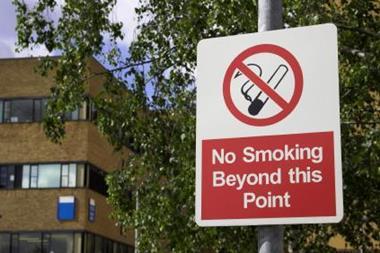In the first of a monthly series of advice, tips and example questions to help you perform well in the CII exams, Angelique Ruzicka and the CII look at successful study methods (scroll down for answers)
Passing the Chartered Insurance Institute (CII) exams is not easy. So Insurance Times has collaborated with the CII to provide some tips on how to pass these tough assessments.
Every month we will guide you through the modules and provide questions for you to test your knowledge. CII exams take place April and October each year so for those sitting the exams this autumn – this is an good opportunity to test your knowledge.
The first point to remember is that you are seeking a professional qualification, so it is important that you understand the level of knowledge and skills needed to pass the exams.
The diploma tests both your knowledge and understanding at a technical level across the entire syllabus and you will need to know your subject well to do yourself justice.
While the advanced diploma tests higher-level understanding of insurance practice and the ability to apply your knowledge in different workplace scenarios.
Like most professional qualifications the examination is based on a syllabus, which is available on the CII website. This will guide you through what you are expected to understand and help you to identify those areas with which you are least familiar.
A reading list is included with the syllabus and you are also advised to read about the general insurance industry as widely as possible.
Advice from previous applicants who have taken CII exams
Martyn Owens, development executive, JLT Corporate Risks
I found the exams extremely challenging. The depth of knowledge required and the commitment in time means that you have to be prepared to put in the effort. However, that being said, the rewards are great – not just in terms of the qualifications but also in the knowledge gained, which I use every day at work. Over time I have developed a technique which works for me – one hour of revision in the mornings before work, an hour at lunch and a final hour after work whenever possible, to leave my evenings and weekends free.
Emily Hughes, junior press officer, Lloyd’s
Preparing for the exam was harder than I had anticipated. I thought some degree of common sense would help me through but you need to learn the precise wordings and details to pass. Reading through the course book for an overall understanding of the topics is a good way to start as the chapters interlink and overlap but it’s important to know the specifics. Night classes and revision sessions are also offered in the lead up to the exam date, but I also picked up a lot in my day-to-day work. The multiple-choice exam was hard and I used the entire amount of time offered, as did many others.
Zoe Baker, events executive, Lloyd’s
At the start the material looks daunting although once you begin reading then the information is interesting. It’s important to set aside plenty of time in the two weeks before the exam to really focus as it’s difficult to absorb all of the information if you don’t leave enough time. My study technique was to read the material a couple of times and to work through the sample exam questions. If you work in the insurance market then you may not find it too difficult, but there are still many acronyms and technical terms to learn.
Example questions from CII examinations
(see below for answers)Question 1: In the case of a life assurance policy when must insurable interest exist?
a) At the time of loss only
b) At inception only
c) At inception and at the time of the loss
d) During the whole time that the policy is in force
Question 2: How is the Motor Insurers’ Bureau funded?
a) Directly by the government
b) Through member company subscriptions
c) Through charitable donations
d) Through shareholder funds and retained profits
Question 3: If a qualifying disclosure is made to a “prescribed person” rather than to the worker’s employer, what additional requirement applies before it becomes “protected” by the Public Interest Disclosure Act (PIDA) 1998?
a) The worker must reasonably believe that the information disclosed is substantially true
b) It must be reasonable for the worker to make the disclosure
c) The worker must reasonably believe that if he makes the disclosure to his employer he will be subjected to a detriment
d) The disclosure must concern a current and continuing state of affairs
Question 4: For a retail concern, the sum insured for stock is normally based on?
a) Its replacement cost
b) Its sale price at today’s date
c) Its estimated sale price in 12 months’ time
d) The average selling price throughout the year
Question 5: Captive insurance companies are most commonly formed by?
a) Governments, to insure risks that cannot be placed in the normal insurance market
b) Large international businesses, to underwrite the insurance risks of the parent company
c) Syndicates of Lloyd’s underwriters, to provide them with additional insurance capacity
d) Large international insurance brokers, to provide cover for their clients at competitive rates
Question 6: An insurance organisation’s norms, beliefs and management style together make up its?
a) Mission statement
b) Corporate culture
c) Strategic objectives
d) Articles of Association
Question 7: The overall intensity of the FSA’s regulatory programme is determined primarily by?
a) Its assessment of the risk that an authorised firm poses
b) The size of an authorised firm in terms of its turnover
c) The number of years that an authorised firm has been in business
d) The nature of an authorised firm’s customer base
Question 8: Graham is a property surveyor employed by a firm of surveyors that works for a large building society. Which of these situations could lead to a claim being made under his employer’s professional indemnity policy?
a) He breaks a window in a client’s house while conducting a property survey
b) A rung in the ladder supplied by his employer breaks and he falls and breaks his wrist
c) He opens a door without looking and injures the client standing behind it
d) He overlooks some defects when surveying a property and the buyers have to pay for structural repairs
Postscript
Answers
Question 1: b) In life assurance, insurable interest is only required at inception and there is no requirement for insurable interest at the time of a claim (Dalby v. The India and London Life Assurance Company 1854).
Question 2: b) All authorised motor insurers in the UK are required to be members of the MIB. Their membership requires them to fund the bureau through a levy based on premium income.
Question 3: a) Where the disclosure is made to a ‘prescribed person’ under the PIDA 1998, the worker must reasonably believe that the information disclosed, and any
Question 4: a) The sum insured for stock should be based on it's replacement cost including delivery and handling charges. For a business where the value of stock held may vary throughout the year, the sum insured is normally adjustable.
Question 5: b) Setting up a Captive insurance company is a method of transacting risk transfer for large international organisations. The parent company forms a subsidiary insurance operation to underwrite its insurance risks. The parent company benefits from paying premiums based solely on its own experience, avoidance of the normal insurance company overheads, cheaper premiums through access to reinsurance markets, and tax advantages through basing the captive in an off-shore tax haven.
Question 6: b) Corporate culture can be defined simply as: 'the way we do things around here'. It will often be heavily dependent on the personal values of the company's founder, or chief executive.
Question 7: a) The FSA has adopted a ‘risk-driven’ approach to regulation and has introduced a Risk Assessment Framework which sets out for insurance firms the assessment process they will go through. The FSA places a high degree of reliance on senior management responsibility and looks to management to address any issues that are identified during the risk assessment process.
Question 8: d) Financial liabilities which result from Graham's failure to notice that the property he was surveying had some defects would be covered by his firm's professional indemnity policy.
Hosted by comedian and actor Tom Allen, 34 Gold, 23 Silver and 22 Bronze awards were handed out across an amazing 34 categories recognising brilliance and innovation right across the breadth of UK general insurance.














































No comments yet